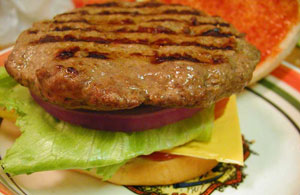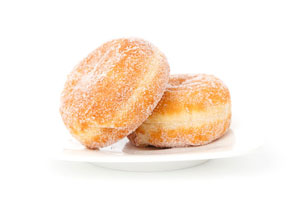
Many of the foods we love and think of as “American” really have origins in a number of other countries. Never has the melting pot of America been more evident than in the food we eat, and some of their origins just may surprise you.
Coffee
How many of us could make it through the day without our morning cup of joe? Well turns out that coffee can’t grow in the United States. Coffee is only cultivated in climates close to the equator with Brazil being the leading coffee producer in the world.
Introduced to the colonies in the 17th century, coffee became increasingly popular as our difficulties with the British escalated. During the 18th and 19th centuries, consumers purchased bags of green coffee beans at their local mercantile and roasted them at home in a pan on a wood burning stove.
After roasting, the beans were ground using a mortar and pestle before boiled in water. The result was a somewhat cloudy, bitter tasting brew that required copious amounts of sugar and milk. Thank goodness the brewing of coffee process was perfected over time.
 Hamburgers
Hamburgers
Hamburgers evolved from the 12th century Mongols who used to spend days in the saddle, so they carried filets of meat, usually horse or camel, under their saddles to allow it to crumble by the constant pounding of the horse’s movements. The extreme heat generated between the saddle and the horse, also cooked the meat.
This idea eventually found its way to Hamburg, Germany where the hamburger garnered its name, and German immigrants began selling them in buns in the 19th century.
Doughnuts
Contrary to a popular urban myth, doughnuts did not originate at any of the World’s Fairs. One of America’s favorite sweet treats had its origins in Northern Europe, possibly due to Ancient Roman occupation.
Though there is some debate, doughnuts are either of Dutch or German origin, and they did not originally have a hole in the center, rather, bakers used fruits like apples to fill them.
So next time you enjoy some of your favorite American foods, thank our immigrant ancestors because those favorites just might not be American at all.
 No Yeast Doughnuts
No Yeast Doughnuts
http://www.cooks.com/rec/view/0,194,155172-236194,00.html
1 c. milk
1 c. sugar
2 1/2 tbsp. butter
1 1/2 tsp. salt
3 eggs, beaten
4 tsp. baking powder
1/4 tsp. cinnamon
Confectioners’ sugar
3 1/2 c. sifted flour
Oil for deep frying
In a bowl combine sugar and butter. Add eggs and blend. Add milk. In another bowl combine flour, baking powder, salt and cinnamon. Add liquid mixture to flour mixture gradually, beating vigorously. Knead lightly on a floured work surface. Add a small amount of flour, if needed to keep dough from sticking.
Roll out to 1/4 inch thick rectangle. Use a doughnut cutter to cut dough. Fry in deep hot oil, maintaining a 370°F temperature.
When doughnuts rise to top, turn only once. Drain doughnuts on absorbent paper. Sprinkle with confectioners’ sugar.
Sources:
http://www.foodtimeline.org/foodfaq1.html#doughnuts
http://www.foodtimeline.org/foodbeverages.html#coffeeamerican
http://whatscookingamerica.net/History/HamburgerHistory.htm
